Tubb Canyon Desert Conservancy
Sahara Mustard: RESEARCH PUBLICATIONS
(in order of publication date)
Phase I : Multiple introductions and population structure during the rapid expansion of the invasive Sahara mustard (Brassica tournefortii)Daniel E. Winkler, Kenneth J. Chapin, Olivier François, J. David Garmon, Brandon S. Gaut, and Travis E. Huxman
- April 2019 - Online Publication
- April 2019 - PDF Publication
- Letter to the Editor, Response to Phase I Article
Rapid alignment of functional trait variation with locality across the invaded range of Sahara mustard (Brassica tournefortii): Daniel E. Winkler, Jennifer R. Gremer , Kenneth J. Chapin , Melanie Kao, and Travis E. Huxman
Sahara Mustard (Brassica tournefortii) Research & Control Strategies
Source: Publication
Presentation posted by the Desert Managers Group:
http://www.dmg.gov/ on 13 July 2011
Curt Deuser
Restoration Ecologist
National Park Service
Exotic Plant Management Team
Steve Ostoja
USGS Research Ecologist
Western Ecological Research Center
Biologically Based Integrated Management of Weeds On Western Rangeland and Watersheds:
Prospects for Classical Biological Control of Saharan Mustard (Brassica tournefortii) -- Meeting Abstract (May 2010)
Source: USDA Agricultural Research Service Exotic and Invasive Weeds Research
Brian Rector, Research Entomologist
USDA Agricultural Research Service (ARS); PWA; GBRRU
Brian.Rector@ars.usda.gov
775.784.6057 ext. 247
920 Valley Road
Reno, NV 89512
Vili Harizonova
Javid Kashefi
Massimo Cristofaro
USDA ARS Exotic and Invasive Weeds Research Unit
Technical Abstract:
Saharan mustard (Brassica tournefortii) is a winter annual plant that is native to the Mediterranean Basin and is becoming highly invasive in the Sonoran and Mojave Deserts and adjacent areas and has spread great distances along highways from its original infestation. It is becoming a serious problem in natural areas where weed management is not a direct economic priority. Classical biological control is being considered as a control strategy for this weed. This presentation provides an overview of biological control of weeds and addresses the specific potential for its successful application to Saharan mustard. A case study of a confamilial target weed (Lepidium latifolium) is presented and advantages of having an active biological control program targeting a closely related plant are discussed.
Phenology as a basis for management
of exotic annual plants in desert invasions
Source: Journal of Applied Ecology (2010), 47, 1290–1299
Robin G. Marushia
rmarushia@utsc.utoronto.ca
Jodie S. Holt
Department of Botany and Plant Sciences
University of California Riverside
Riverside, CA
Marc W. Cadotte
Department of Biological Sciences, University of Toronto – Scarborough
Scarborough, Ontario
Canada
Effects of an invasive plant on a desert sand dune landscape
Source: Biol Invasions (2009) 11:673–686
Cameron W. Barrows
Edith B. Allen
Michael F. Allen
cbarrows@ucr.edu
Center for Conservation Biology, University of California Riverside,
Riverside, CA 92521-0334
Matthew L. Brooks
U.S. Geological Survey, Western Ecological Research Center
Yosemite Field Station
El Portal, CA 95318
Seed Germination of the Invasive Plant Brassica tournefortii
(Sahara Mustard) in the Mojave Desert
Source: Western North American Naturalist, 68(3):334-342. (2008)
Dianne N. Bangle
dianne.bangle@univ.edu
Public Lands Institute, University of Nevada Las Vegas
4505 S. Maryland Parkway
Las Vegas, NV 89154-2040
Lawrence R. Walker
School of Life Sciences, University of Nevada Las Vegas
4505 S. Maryland Parkway
Las Vegas, NV 89154-4004
Elizabeth Ann Powell
Box 61872
Boulder City, Nevada 89006-1872
